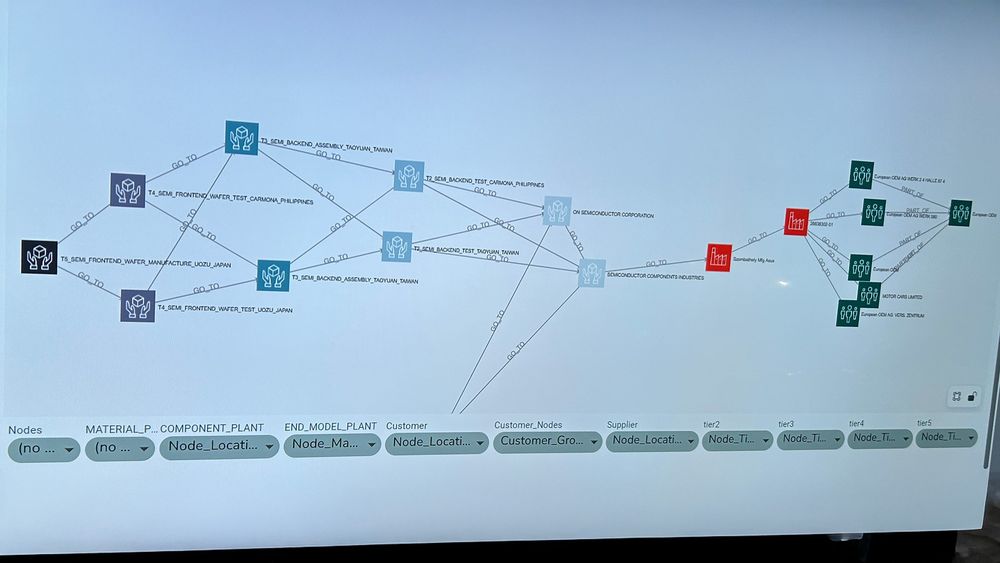How Aptiv Plans to Make Cars Better to Drive, Prettier, and Easier to Build
Urban hands-free driving, a much-needed replacement for ugly ultrasonic parking sensors, and a fresh take on electrical architecture.
As the industry transitions to software-defined vehicles, manufacturers are grappling with whether to hire internal talent or purchase ready-made solutions from the supplier world. Global Tier I supplier Aptiv made its case for the latter at CES 2025. You may recall that Aptiv is a surviving remnant of the former GM supplier spinoff Delphi focused on two main areas of electrical and electronics development: “Signal and Power Solutions” and “Advanced Safety and User Experience.”
A boon to Aptiv’s software-defined vehicle bona fides was its recent acquisition of Wind River Systems, a Silicon-Valley cloud software and embedded operating-systems company. Here are three areas where Aptiv aims to improve your driving life, plus a couple ways it hopes to ease the job of designing and building vehicles.
Urban Hands-Free Driving
Combining its own or another supplier’s hardware with Aptiv’s open, scalable software, the company’s latest Gen 6 platform utilizes artificial intelligence and machine learning to deliver fully integrated and scalable driver support systems ranging from basic safety compliance up to hands-free L2+ and potentially L3 autonomy.
This package, available today, was demonstrated in a Ford Mach-E. Looking farther forward, Aptiv is working on a Hands-Off Urban Assist system—imagine BlueCruise for city driving, not closed highway systems, that relieves drivers of the stress of navigating congested traffic and diverse weather while improving safety. These systems both benefit from machine-learning-based predictive technology, which enables the system to learn more human-like driving behavior, as it adapts to new real-world driving conditions.
An End to Ugly Ultrasonic Sensors
Designers rejoice! Aptiv is offering a potential alternative to those ugly dime-sized zits that have marred bumper fascias since the dawn of park-distance sensing. Dubbed the “Ice Cube Sensor,” it incorporates a camera plus a small ultrashort-range radar sensor in one tiny unit. It looks and functions as a surround-view camera, but it can also determine the distance to a curb, or a vehicle, child, or other hazard when parking. It packages in the same space as existing cameras and provides blind-spot warning, too. Best of all, Aptiv currently estimates that a four-unit package providing full surround camera views and sensing will cost 10 percent less than today’s cameras and ultrasonic sensor array. These sensors are expected to hit production by 2027, at which point we hope to see much cleaner looking bumpers the world over.
Dual Power-Rail Architecture
On the power solutions side of the house, Aptiv showed off a restyled electric Porsche 911 featuring primary and secondary power supply rails serving all safety-critical systems. The primary circuit is supplied by the DC-to-DC power converter, while the secondary rail is connected directly to the low-voltage battery. The system is designed in such a way as to enable both rails to work together (temporarily discharging the low-voltage battery) in times of peak power demand—such as when the e-braking, e-steering, and active suspension systems are all working simultaneously. A primary-network separator can disconnect the primary rail in the event of any major fault or system failure within 100 microseconds, automatically shedding non-safety-critical loads and prioritizing the safety systems served by the secondary rail.
Supply Chain Resilience and RFQ Help
Aptiv even has a solution to better monitor and predictively avoid supply-chain problems, offering software to completely model a manufacturer’s entire supply chain. This “digital twin” supply chain is used to help suggest potential trouble spots and manage multilevel diversification. The system even monitors weather and news events to offer predictive solutions to any potential supply-chain bottlenecks such events could create.
Another Aptiv/Wind River product leverages AI to sort out what could be tens of thousands of requirements in any particular Request for Quote (RFQ). The software helps ensure there are no conflicting or overlapping requirements, and if there are, it helps suggest an expert within the company to help sort it out, saving time and money.
I started critiquing cars at age 5 by bumming rides home from church in other parishioners’ new cars. At 16 I started running parts for an Oldsmobile dealership and got hooked on the car biz. Engineering seemed the best way to make a living in it, so with two mechanical engineering degrees I joined Chrysler to work on the Neon, LH cars, and 2nd-gen minivans. Then a friend mentioned an opening for a technical editor at another car magazine, and I did the car-biz equivalent of running off to join the circus. I loved that job too until the phone rang again with what turned out to be an even better opportunity with Motor Trend. It’s nearly impossible to imagine an even better job, but I still answer the phone…
Read More





